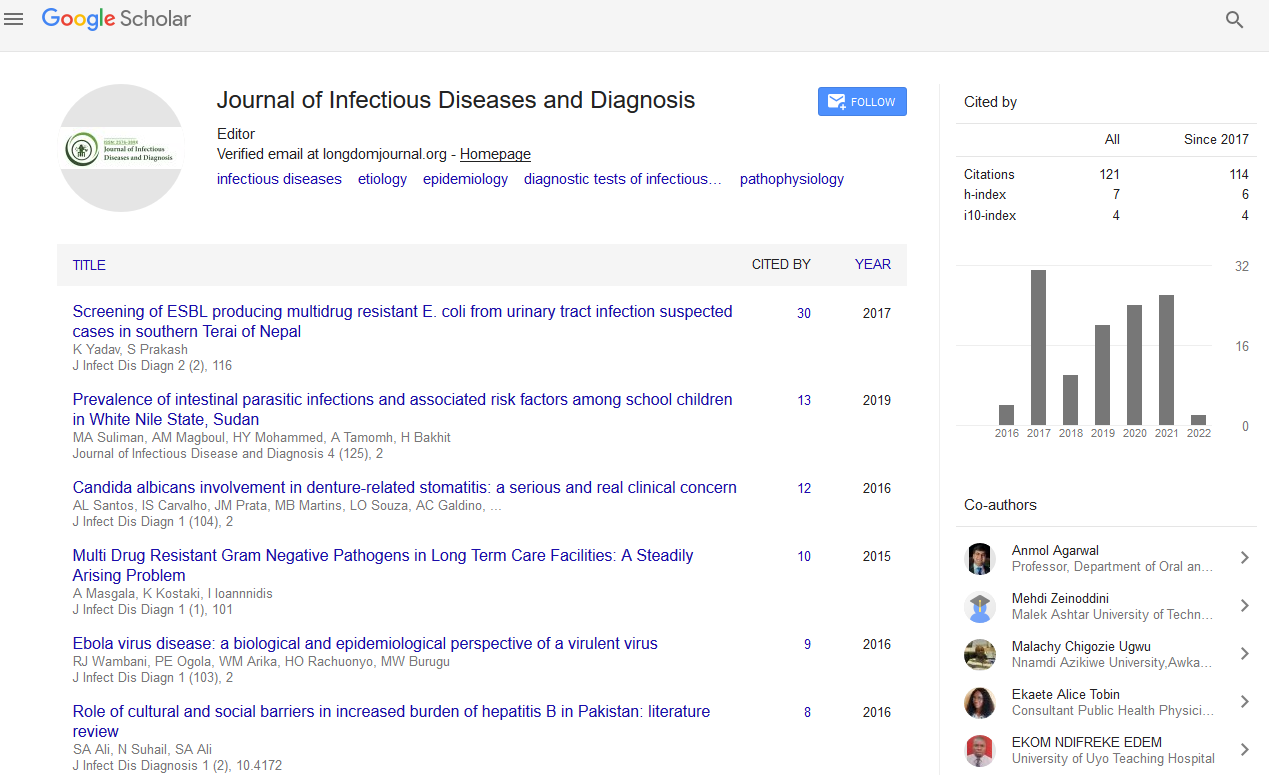Indexed In
- RefSeek
- Hamdard University
- EBSCO A-Z
- Publons
- Euro Pub
- Google Scholar
Useful Links
Share This Page
Journal Flyer

Open Access Journals
- Agri and Aquaculture
- Biochemistry
- Bioinformatics & Systems Biology
- Business & Management
- Chemistry
- Clinical Sciences
- Engineering
- Food & Nutrition
- General Science
- Genetics & Molecular Biology
- Immunology & Microbiology
- Medical Sciences
- Neuroscience & Psychology
- Nursing & Health Care
- Pharmaceutical Sciences
Abstract
Rapid Optical Detection Strategy for Human Pathogens: A Brief Review
Pragati Jamdagni, Rana JS and Poonam Khatri
Quick, sensitive and specific detection of infectious agents can aid in better treatment of patients and for recognition of contaminants. Traditional methods suffer from drawbacks of being time consuming and tedious to perform and modern medicine advances call for better detection methods. Strategies employing nanoparticle based systems are under investigation to allow for efficient and rapid detection of pathogenic microorganisms. Nanoparticles have been conjugated with nucleic acid probes and antibodies to serve as one step detection system, based on conserved genomic DNA sequences and specific surface proteins expressed by the microorganisms, respectively. Unique size based colorimetric properties are being exploited for developing optical sensors enabling result visualization with the help of naked eye or simple spectroscopic techniques. The current communication deals with basic ideology of conjugate synthesis, strategy adopted for deduction of positive and negative interaction with the test sample and some lab tested examples employing these conjugate systems.


